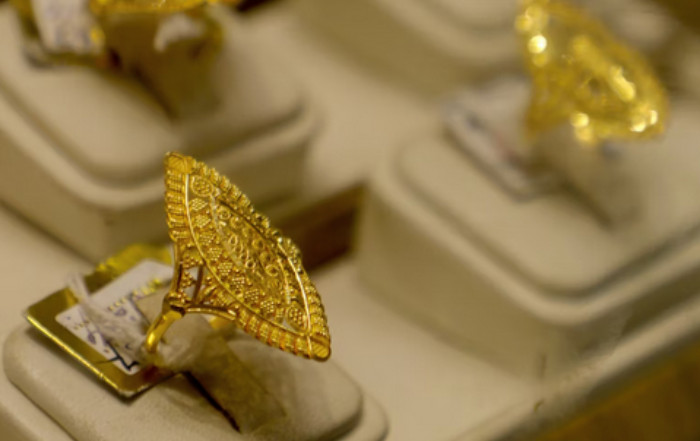Inside the Habits of Women Who Balance Ambition and Wellbeing
Redefining Success for Ambitious Women in 2025
In 2025, the women featured and celebrated on HerStage are operating in a world that is more connected, more demanding and more opportunity-rich than ever before, yet also more exhausting, distracting and unforgiving of missteps. The rise of hybrid work, the acceleration of digital transformation and the cultural pressure to "have it all" have created a paradox: professional doors are opening for women across North America, Europe, Asia, Africa and South America, but the cost of walking through those doors can be chronic stress, burnout and a quiet erosion of personal wellbeing if success is not deliberately redefined. Against this backdrop, women who manage to combine sustained ambition with genuine wellbeing are not simply lucky; they are disciplined architects of their own lives, drawing on research-based habits, clear values and a deep understanding of their personal limits and aspirations.
For the global audience of HerStage, spanning careers in finance in New York, technology in Berlin, design in Milan, consulting in Singapore, public service in Johannesburg and entrepreneurship in São Paulo, the central question is no longer whether women can succeed in traditionally male-dominated arenas, but rather how they can do so without sacrificing their health, relationships or sense of self. As leading institutions such as the World Health Organization highlight the long-term impact of chronic stress on physical and mental health, and organizations like McKinsey & Company continue to document the pressures placed on women leaders, the need for a more sustainable, humane model of ambition has become impossible to ignore. Women who thrive today are those who treat wellbeing as a non-negotiable strategic asset, not a luxury to be postponed.
The Mindset Shift: From Hustle Culture to Sustainable Ambition
Ambitious women who balance drive and wellbeing tend to begin not with time-management tricks but with a fundamental mindset shift away from the relentless hustle culture that dominated the 2010s. Rather than equating longer hours with greater value, they adopt a performance mindset that prioritizes outcomes, learning and long-term capacity. Research from organizations such as the Harvard Business Review has repeatedly shown that overwork diminishes creativity, decision quality and leadership effectiveness, yet the myth of the tireless high performer persists in many industries, from finance in London and Frankfurt to technology in San Francisco and Seoul. Women who successfully resist this myth often do so after a turning point, such as a health scare, a burnout episode or a personal loss, which forces them to reassess their definition of success.
This mindset shift is not about lowering ambition; it is about elevating standards for how that ambition is pursued. Many high-performing women now design their careers with the same strategic rigor that major corporations apply to long-term planning, asking what kind of life they want in ten or twenty years, what level of energy and health that life will require, and what habits must be built today to make it possible. Readers exploring the leadership-focused content on HerStage Leadership will recognize this as a move from reactive career progression to intentional, values-led growth. Women who make this shift often speak of feeling less frantic and more focused, not because they have fewer responsibilities, but because they are clearer about what truly matters and more willing to let go of what does not.
Anchoring Ambition in Values and Purpose
At the core of sustainable ambition lies a clear sense of personal values and purpose. Women who balance high performance with wellbeing tend to have spent time clarifying what they stand for, what kind of impact they want to have and what they are unwilling to sacrifice in the pursuit of external markers of success. This values work may be supported by coaching, therapy or structured reflection tools, and it often draws on insights from psychology and leadership research such as that published by the American Psychological Association, which emphasizes the protective role of meaning and purpose against burnout and stress. When ambition is anchored in values rather than ego or comparison, it becomes easier to set boundaries, decline misaligned opportunities and weather inevitable setbacks.
Purpose-driven ambition also supports resilience across different cultural and economic contexts, whether a woman is leading a startup in Toronto, managing a manufacturing plant in Shanghai, directing a non-profit in Cape Town or building a creative career in Barcelona. Women who return regularly to the question of why they are doing what they do are better able to adjust their strategies without losing their sense of direction. Those who explore HerStage Self-Improvement often report that journaling, regular reflection and conversations with mentors help them reconnect to their core motivations, especially during demanding phases such as product launches, fundraising rounds or major career transitions. Over time, this clarity becomes a filter that shapes what they say yes to, how they allocate their time and how they negotiate for support at work and at home.
Designing Daily Rhythms That Protect Energy
Beyond mindset and values, the women who manage to harmonize ambition and wellbeing tend to treat their daily routines as carefully designed systems rather than ad hoc reactions to external demands. They understand that energy, not time, is the ultimate currency of performance, and they structure their days to protect and renew that energy. Research from institutions such as the Mayo Clinic and the Cleveland Clinic underscores the importance of sleep, movement, nutrition and stress management in sustaining cognitive performance, emotional stability and long-term health. Ambitious women who internalize this knowledge are more likely to protect their sleep windows, incorporate regular movement into their schedules and build micro-recovery moments into their workdays, whether they are working in a corporate office in Sydney, a co-working space in Amsterdam or from home in Vancouver.
These daily rhythms often reflect a blend of global best practices and personal experimentation. Some women adopt early-morning routines that include exercise, journaling or meditation before engaging with email or social media, drawing on mindfulness practices that have been widely documented by institutions such as the Greater Good Science Center at the University of California, Berkeley. Others create strict cut-off times for work-related communication in the evenings to protect family time, creative pursuits or rest. For many readers of HerStage Lifestyle, the key is not copying a celebrity routine but identifying a pattern that is realistic, repeatable and aligned with their own chronotype, family responsibilities and cultural context. Over time, these rhythms become self-reinforcing habits that reduce decision fatigue and free up mental space for complex work and strategic thinking.
Boundary-Setting as a Strategic Skill
One of the most consistent habits among women who balance ambition and wellbeing is the ability to set and maintain boundaries with clarity and confidence. Boundaries are not simply about saying no; they are about defining what is acceptable in terms of workload, communication, behavior and time, and then consistently reinforcing those limits in a way that is firm yet professional. In many corporate cultures across the United States, the United Kingdom, Germany, France and Japan, boundary-setting can be particularly challenging for women due to lingering expectations around availability, responsiveness and emotional labor. However, research from bodies such as the Chartered Institute of Personnel and Development in the UK and the Society for Human Resource Management in the US indicates that clear boundaries are associated with lower burnout, higher engagement and better retention.
Women who excel at boundary-setting often treat it as a leadership skill rather than a personal preference. They communicate expectations to teams, clients and managers upfront, negotiate realistic timelines and push back on scope creep with data and options rather than apology. Many also leverage the growing normalization of flexible and hybrid work to design boundaries that support both performance and personal life, such as protected focus blocks, meeting-free mornings or designated caregiving hours. Readers exploring HerStage Career will recognize that effective boundary-setting is especially crucial during career transitions, promotions or international assignments, when new responsibilities can easily expand to fill all available space. Over time, women who model healthy boundaries create permission for others to do the same, subtly shifting organizational norms in favor of sustainable work practices.
Building Networks That Support Both Drive and Health
Another defining habit of women who sustain high levels of ambition without burning out is the deliberate cultivation of networks that support both professional growth and personal wellbeing. While networking has long been associated with career advancement, the most effective women in 2025 build ecosystems of support that include mentors, sponsors, peers, health professionals and trusted friends across cities such as New York, London, Singapore, Stockholm, Dubai and Cape Town. Studies from organizations like LeanIn.Org and Catalyst have highlighted the importance of sponsorship and peer networks in helping women navigate systemic barriers, negotiate promotions and access stretch opportunities. Yet the women who thrive over decades also seek out relationships that encourage rest, self-compassion and perspective, not only relentless striving.
These networks are increasingly global and multi-channel, blending in-person connections with digital communities and curated platforms. Professional associations, alumni groups and industry conferences remain important, but online communities and curated media such as HerStage Women now play a growing role in connecting ambitious women across continents around shared interests, challenges and aspirations. Many women intentionally diversify their networks to include people from different generations, industries and cultural backgrounds, which broadens their thinking and helps them avoid the echo chamber of a single company or sector. By investing time in nurturing these relationships, they create a safety net of advice, referrals, emotional support and honest feedback that becomes invaluable during career inflection points, health challenges or major life events.
Integrating Physical Health as a Leadership Priority
Ambitious women who maintain wellbeing treat physical health not as an optional afterthought but as a foundational leadership resource. They understand that sustained performance in demanding roles requires cardiovascular fitness, muscular strength, metabolic health and hormonal balance, and they are increasingly guided by evidence-based recommendations from organizations such as the World Health Organization, the Centers for Disease Control and Prevention and national health services across Europe, Asia and Oceania. Rather than chasing extreme fitness trends, they tend to favor consistent, moderate practices that fit into their schedules, such as brisk walking, strength training, yoga or cycling, often combining movement with social connection or time in nature.
Nutrition is another area where habits differentiate women who thrive over time from those who burn out. Many high-performing women build simple but robust systems around food, such as weekly meal planning, batch cooking or relying on healthy delivery services during peak work periods, informed by guidance from reputable sources like the Harvard T.H. Chan School of Public Health. For the HerStage audience interested in the intersection of performance and nourishment, HerStage Food offers perspectives on how to fuel long days without relying solely on caffeine and sugar. Across regions from Canada and Australia to Norway and Thailand, women who integrate physical health into their leadership identity are more likely to seek preventive care, track key health metrics and proactively address issues such as sleep disorders, hormonal shifts or chronic pain before they derail their careers.
Protecting Mental Health and Emotional Resilience
In parallel with physical health, mental health has moved from the margins to the center of conversations about sustainable ambition, especially after the global disruptions of the early 2020s. Women who balance drive and wellbeing are typically proactive in developing emotional resilience and seeking support when needed. They draw on a growing body of research from organizations such as Mind in the UK, the National Alliance on Mental Illness in the US and global initiatives supported by the World Economic Forum, all of which emphasize the impact of psychological safety, social support and self-compassion on long-term performance. Rather than viewing therapy, coaching or counseling as signs of weakness, they treat these resources as tools for maintaining clarity, processing stress and navigating complex interpersonal dynamics at work and at home.
Mindfulness and contemplative practices also play a significant role in the emotional toolkit of many ambitious women. Techniques such as meditation, breathwork and reflective journaling are increasingly mainstream, supported by evidence from institutions like Stanford Medicine and the National Institutes of Health, which highlight their benefits for stress reduction, focus and emotional regulation. For readers exploring HerStage Mindfulness, the practical integration of these practices into busy lives might involve short guided meditations between meetings, mindful walking during lunch breaks or digital boundaries that reduce constant exposure to news and social media. Over time, these practices help women respond rather than react to challenges, maintain perspective during crises and recover more quickly from setbacks, all of which are critical in high-stakes environments from boardrooms in Zurich to creative studios in Paris and policy forums in Brussels.
Crafting a Career Narrative Instead of Chasing Linear Progress
Another distinctive habit of women who align ambition with wellbeing is the way they think about career progression. Rather than clinging to a rigid, linear ladder, they craft a broader, more flexible career narrative that can accommodate lateral moves, sabbaticals, portfolio careers and geographic shifts. This narrative approach is particularly relevant in a global economy where industries are being reshaped by artificial intelligence, climate transition and demographic change, as documented by organizations like the OECD and the International Labour Organization. Women who adopt this perspective are more willing to step off a particular track temporarily to pursue education, caregiving, entrepreneurship or international experience, confident that these choices can enrich rather than derail their long-term trajectory.
For the HerStage audience immersed in HerStage Business and HerStage Education, this narrative mindset aligns with the rise of lifelong learning and skills-based careers. Ambitious women are increasingly investing in continuous education through executive programs, online courses, certifications and cross-functional projects, drawing on resources from institutions such as INSEAD, London Business School, MIT Sloan and Coursera, while also developing human skills such as communication, empathy and cultural intelligence. By viewing their careers as evolving stories rather than fixed ladders, they reduce the pressure to conform to a single timeline, making it easier to prioritize wellbeing at different life stages, from early-career exploration and mid-career consolidation to late-career reinvention.
Embracing Authenticity, Style and Presence Without Burnout
Ambitious women in 2025 are also redefining how professionalism, style and personal presence intersect with wellbeing. Rather than conforming to narrow norms of how a leader should look or behave, they are increasingly embracing authenticity in how they dress, speak and show up, while remaining attuned to the cultural and organizational contexts in which they operate. This shift is visible in boardrooms, creative industries and public life across Italy, Spain, the Netherlands, South Korea and Brazil, where women leaders combine authority with individuality, drawing on fashion, beauty and personal rituals as sources of confidence rather than pressure.
For readers of HerStage Fashion, HerStage Beauty and HerStage Glamour, this evolution is not about perfection but about intentionality. Women who balance ambition and wellbeing often streamline their wardrobes and beauty routines into systems that reduce decision fatigue while still allowing for self-expression. They may follow evidence-based skincare guidance from sources like the American Academy of Dermatology, choose sustainable fashion informed by organizations such as the Ellen MacArthur Foundation or embrace minimalist routines that free up time and mental space. By aligning their external presence with their internal values and lifestyle realities, they reduce the stress of constant self-presentation and create a more integrated, authentic professional identity.
The Role of Platforms Like HerStage in Shaping a New Paradigm
As women around the world continue to navigate the tension between ambition and wellbeing, platforms like HerStage play a crucial role in amplifying stories, strategies and research that support a more sustainable model of success. By curating content across HerStage World, HerStage Health, HerStage Guide and the broader HerStage ecosystem, the platform offers a lens through which women in the United States, the United Kingdom, Germany, Canada, Australia, France, Italy, Spain, the Netherlands, Switzerland, China, Sweden, Norway, Singapore, Denmark, South Korea, Japan, Thailand, Finland, South Africa, Brazil, Malaysia and New Zealand can see both the diversity and the commonality of their experiences.
By spotlighting women who have made unconventional choices, recovered from burnout, negotiated for better conditions or built businesses aligned with their values, HerStage reinforces the idea that ambition and wellbeing are not opposing forces but interdependent pillars of a fulfilling life. The platform's emphasis on evidence-based insights, cross-cultural perspectives and practical guidance helps readers move beyond generic self-care advice toward habits that are grounded in research, tailored to their realities and aligned with their long-term aspirations. In doing so, HerStage contributes to a global shift in how success is defined and pursued, supporting a generation of women who are determined not only to rise but to do so in a way that is sustainable, humane and deeply their own.
Looking Ahead: A Future Where Thriving Becomes the Standard
As the world moves deeper into the second half of the 2020s, the habits of women who balance ambition and wellbeing are likely to become increasingly visible and influential. Organizations facing talent shortages and engagement challenges are beginning to recognize that supporting employee wellbeing is not merely a moral imperative but a strategic necessity, as highlighted by reports from the World Economic Forum and leading consultancies such as Deloitte. Policy shifts in areas like parental leave, flexible work, mental health support and pay transparency across regions from Europe to Asia-Pacific and North America are also slowly creating conditions that make sustainable ambition more attainable for women at all stages of their careers.
Yet structural change alone will not be enough. The women who will define the next decade of leadership, innovation and social impact are those who internalize the lessons of this period and continue to cultivate the habits described in this article: anchoring ambition in values and purpose, designing daily rhythms that protect energy, setting strategic boundaries, building supportive networks, integrating physical and mental health into their leadership identity, crafting flexible career narratives and embracing authentic presence. For the global community gathered around HerStage, these habits are not abstract ideals but practical, lived choices that shape each day, each decision and each relationship. As more women choose to pursue success on these terms, the very definition of ambition will evolve, making it possible not only to achieve but to thrive, not only to lead but to live well in the fullest sense of the word.










